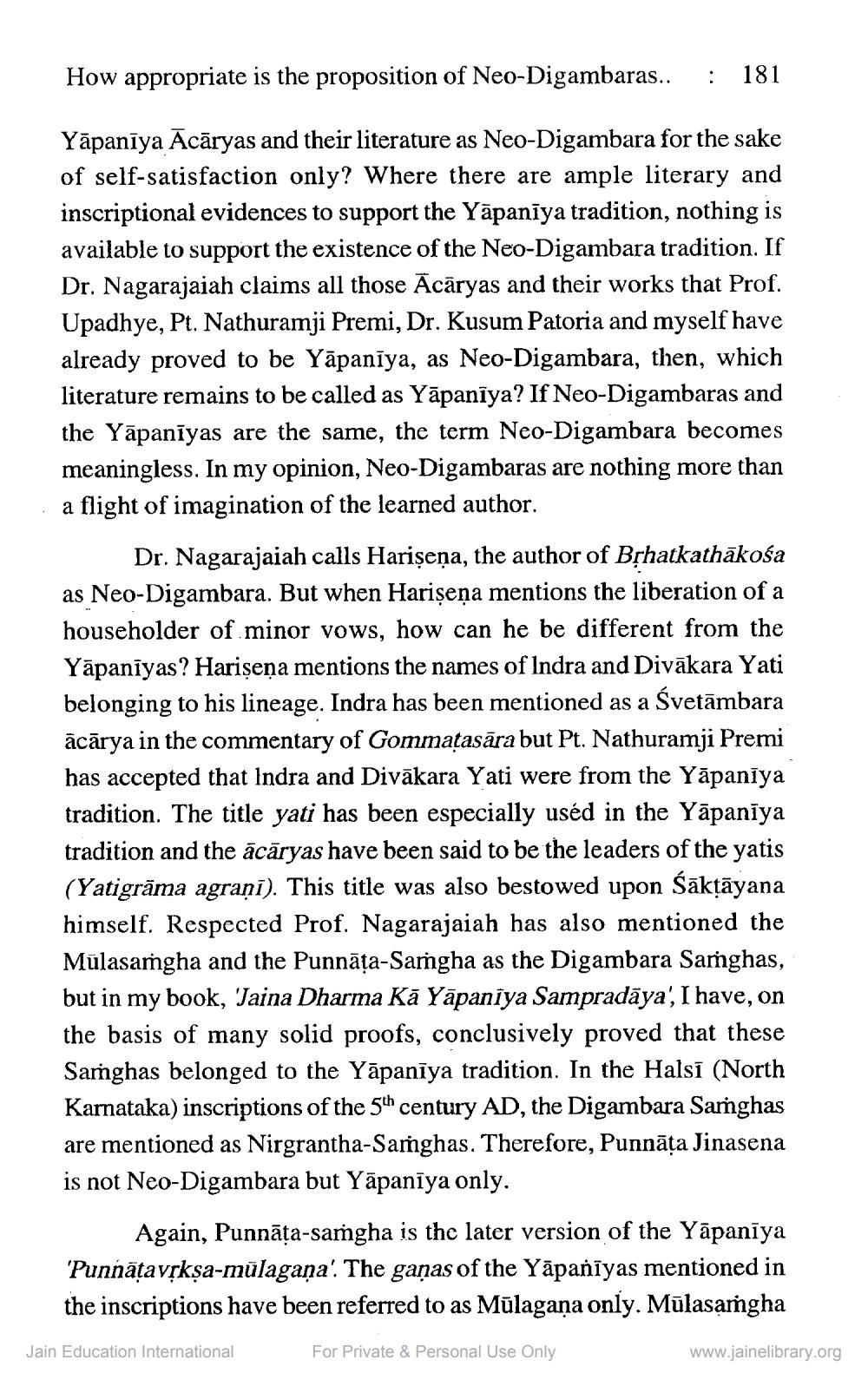________________
How appropriate is the proposition of Neo-Digambaras..
: 181
Yāpanīya Ācāryas and their literature as Neo-Digambara for the sake of self-satisfaction only? Where there are ample literary and inscriptional evidences to support the Yāpanīya tradition, nothing is available to support the existence of the Neo-Digambara tradition. If Dr. Nagarajaiah claims all those Ācāryas and their works that Prof. Upadhye, Pt. Nathuramji Premi, Dr. Kusum Patoria and myself have already proved to be Yāpanīya, as Neo-Digambara, then, which literature remains to be called as Yāpanīya? If Neo-Digambaras and the Yāpanīyas are the same, the term Neo-Digambara becomes meaningless. In my opinion, Neo-Digambaras are nothing more than a flight of imagination of the learned author.
Dr. Nagarajaiah calls Harişeņa, the author of Bșhatkathākośa as Neo-Digambara. But when Harişeņa mentions the liberation of a householder of minor vows, how can he be different from the Yāpaniyas? Harişeņa mentions the names of Indra and Divākara Yati belonging to his lineage. Indra has been mentioned as a Svetāmbara ācārya in the commentary of Gommatasāra but Pt. Nathuramji Premi has accepted that Indra and Divākara Yati were from the Yāpanīya tradition. The title yati has been especially used in the Yāpanīya tradition and the ācāryas have been said to be the leaders of the yatis (Yatigrāma agraṇī). This title was also bestowed upon Śāktāyana himself. Respected Prof. Nagarajaiah has also mentioned the Mülasamgha and the Punnāța-Samgha as the Digambara Saṁghas, but in my book, 'Jaina Dharma Kā Yāpanīya Sampradāya', I have, on the basis of many solid proofs, conclusively proved that these Sarghas belonged to the Yāpanīya tradition. In the Halsī (North Karnataka) inscriptions of the 5th century AD, the Digambara Samghas are mentioned as Nirgrantha-Samghas. Therefore, Punnāța Jinasena is not Neo-Digambara but Yāpanīya only.
Again, Punnāța-saṁgha is the later version of the Yāpanīya 'Punnāțavíkșa-mülagana'. The gaņas of the Yāpanīyas mentioned in the inscriptions have been referred to as Mūlagaña only. Mūlasamgha
Jain Education International
For Private & Personal Use Only
www.jainelibrary.org




